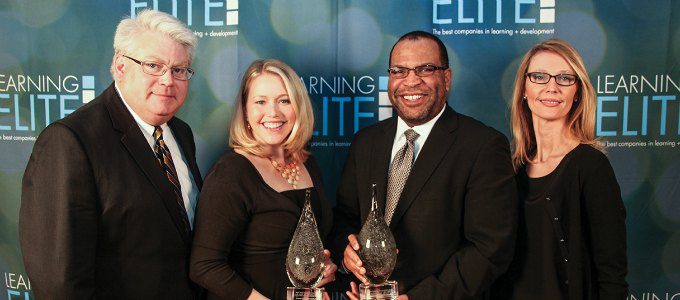Learning at Procter & Gamble Co. isn’t aligned to the business. It is the business. It’s a song and dance that’s mastered at the company thanks to the Li-La-La strategy of NA CBD Capability, the company’s learning team.
CBD — customer business development — is a sales function within P&G. The capability team is the learning team responsible for training that division. While the learning team expects individuals to take responsibility for their own development, it supports that development through Li-La-La: learning intent, learning action and learning application. This framework links directlyto the planned business outcomes.
First, the learning intent phase is owned by the learner and supported by the manager. It represents a developmental contract between the employee and the manager. In this phase the employee ensures readiness to achieve learning objectives and aligns with the manager for coaching, affirmation and confirmation that learning objectives are on target and will enable the employee to deliver improved performance and required business outcomes.
“Our line leaders understand the business results we’re hoping to achieve through learning programs, they help enroll individuals into them and help deliver them. They’re a key part of the alignment and what makes the programs successful,” said Walter Knox, P&G’s North America CBD Capability leader.
The learning action phase is owned by the employee, but the capability team ensures all learning tools are rooted in the business strategy and are designed to improve employee performance, based on employee application, to deliverbusiness results.
This phase is driven by the company’s blended learning model, which incorporates Web-based, classroom, experiential and on-demand modalities.
“For a long time, too long, we focused too much on face-to-face classroom learning,” Knox said. “Now we realize that if a learner learns best by reading a couple of knowledge concepts on his cellphone before bed, we need to cater to that. Not only is it not all about face-to-face anymore. It’s not about the computer. It’s about being there when learners need you.”
Finally, the learning application phase is owned by all. In this phase the learner and manager discuss what was learned in the previous stage and define what on-the-job behavior change is needed to impact the business. The capability team follows the learning application over a six-month period and seeks information on improved performance and delivery of business results. Knox said it’s a collaborative effort, with a goal to make the business effective and make sure the company reaches sale and revenue projections. “It takes multiple stakeholders to do that,” he said.
Stakeholders include Knox’s team of 14, most of whom came from other lines of business. Many came from sales, managed customers early in their careers and then became learning professionals.
“Our mission is to develop an employee over the course of a 30- to 40-year career,” Knox said. “Part of that development means different assignments, different experiences. We’ve identified a role on the learning team as one that would help an individual grow.”
Knox has come in and out of learning twice, has had more than 28 years of experience at P&G, with 13 at the senior manager level. He said the learning the capability team provides could send others on a similar track, and reduce turnover costs for the company.
His team has identified the average cost of a new hire to be $80,000, and more than $200,000 if the employee leaves within the first 18 months of employment. To combat that, P&G created a New Hire Academy to focus on developing employees for the first three years, keep them engaged and make sure they have the opportunities they want and need to grow within the company.
“Our strategy is deliberate,” Knox said. “Everything is linked to the business, linked to employee development and has business leaders involved. We’re part of a business function and make sure we make that seat at the table count.”















